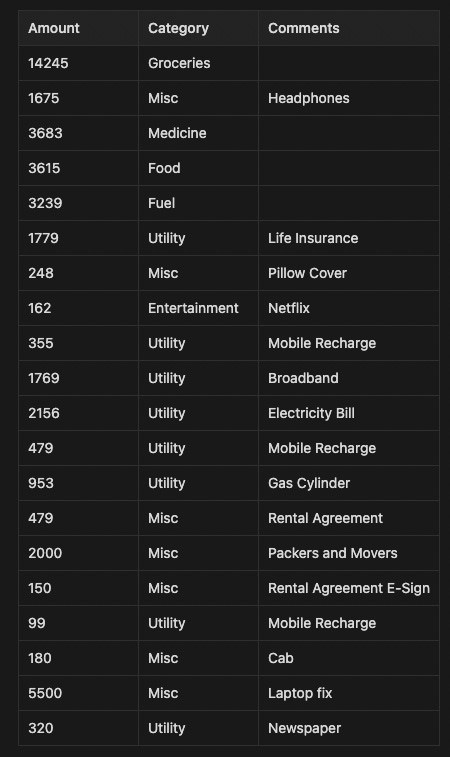Inflation Indexes
Inflation is crucial to setting future financial goals and managing them, but I have always found it very difficult to get an accurate number. Whenever I see the news, I see one article reporting 5.6% inflation and another reporting 8% inflation. On top of these, there are so many inflation indexes like Consumer Price Index (CPI), Cost Inflation Index (CII), etc., It’s normal in goal setting to put an average of the CPI index but there is a better way to track.
Tracking Expenses
The first step is to track expenses and is the first point to do in the financial checklist -
There are so many different apps for it. Some read your emails directly, some read your phone’s SMS, some read your bank account/credit card statement. My thumb rule is to use whatever you are comfortable with. I personally would not use any app that reads my email/sms and would prefer either manual entry (it hardly takes 15-20 mins a month) or an automatic parser/tool from a given file. You need not track every single expense and use approximate monthly expense. Once you plot your expenses you can do average, max, min on these and understand patterns. A sample snapshot of how I used to track expenses.
Note : I now track only net expenses as a whole as I now have an idea of how much I spend. I do note down expenses which are one off and huge i.e like purchasing a laptop or going on a vacation.
Personal Inflation Index
Personal Inflation Index as a term is not that popular. It means that each and every person have their own personal inflation index. For example, person x can spend an amount on fixed needs while person y mostly spends on luxury needs and hence y is subject to more inflation since luxury items are always taxed higher. Tracking how once expense grows and also predicting how it will grow i.e life events like marriage, moving away from parent’s house, planning for kids all take extra budget. So it make sense to continuously track one’s expenses and average it across years to get a better idea.

